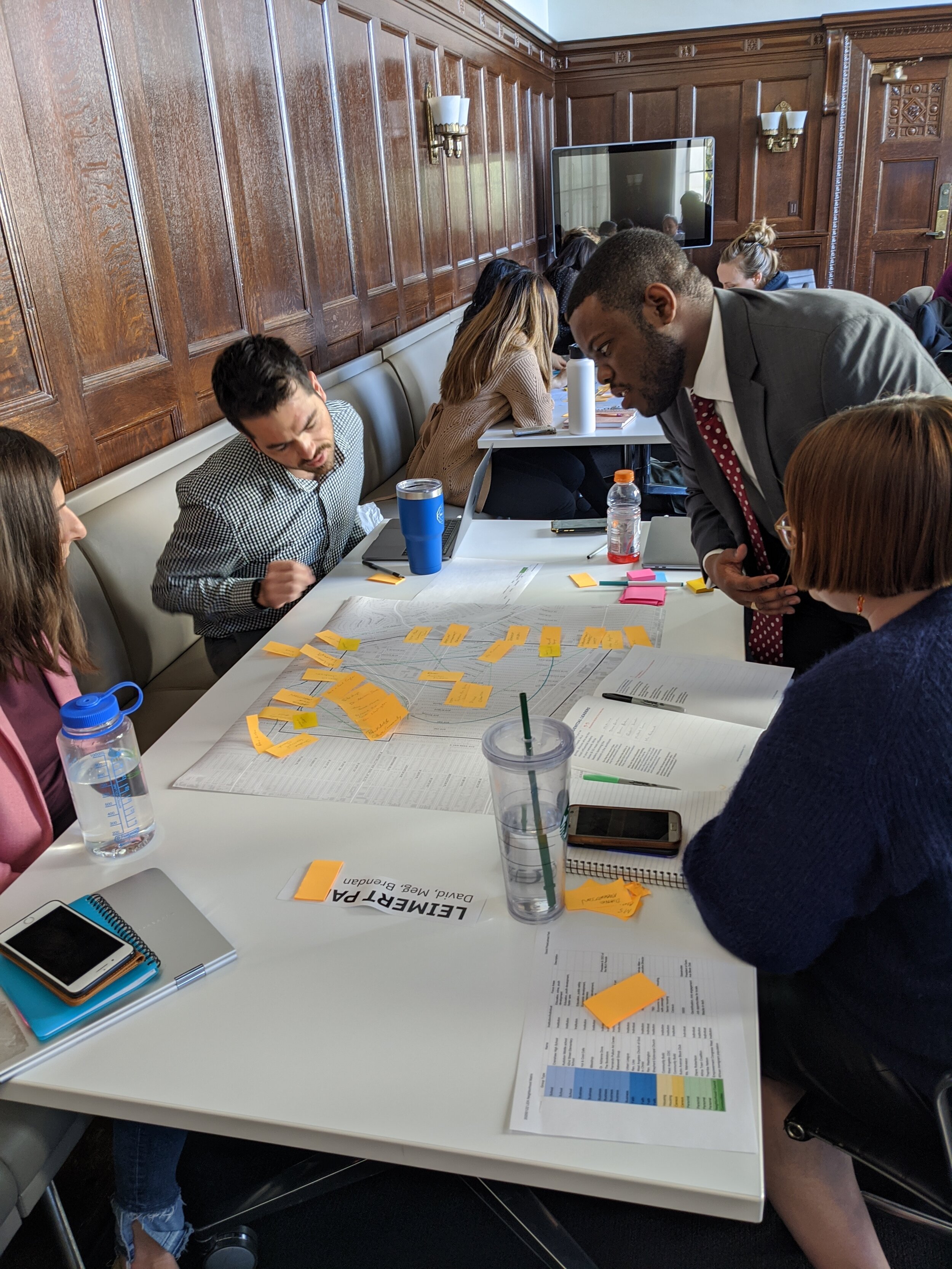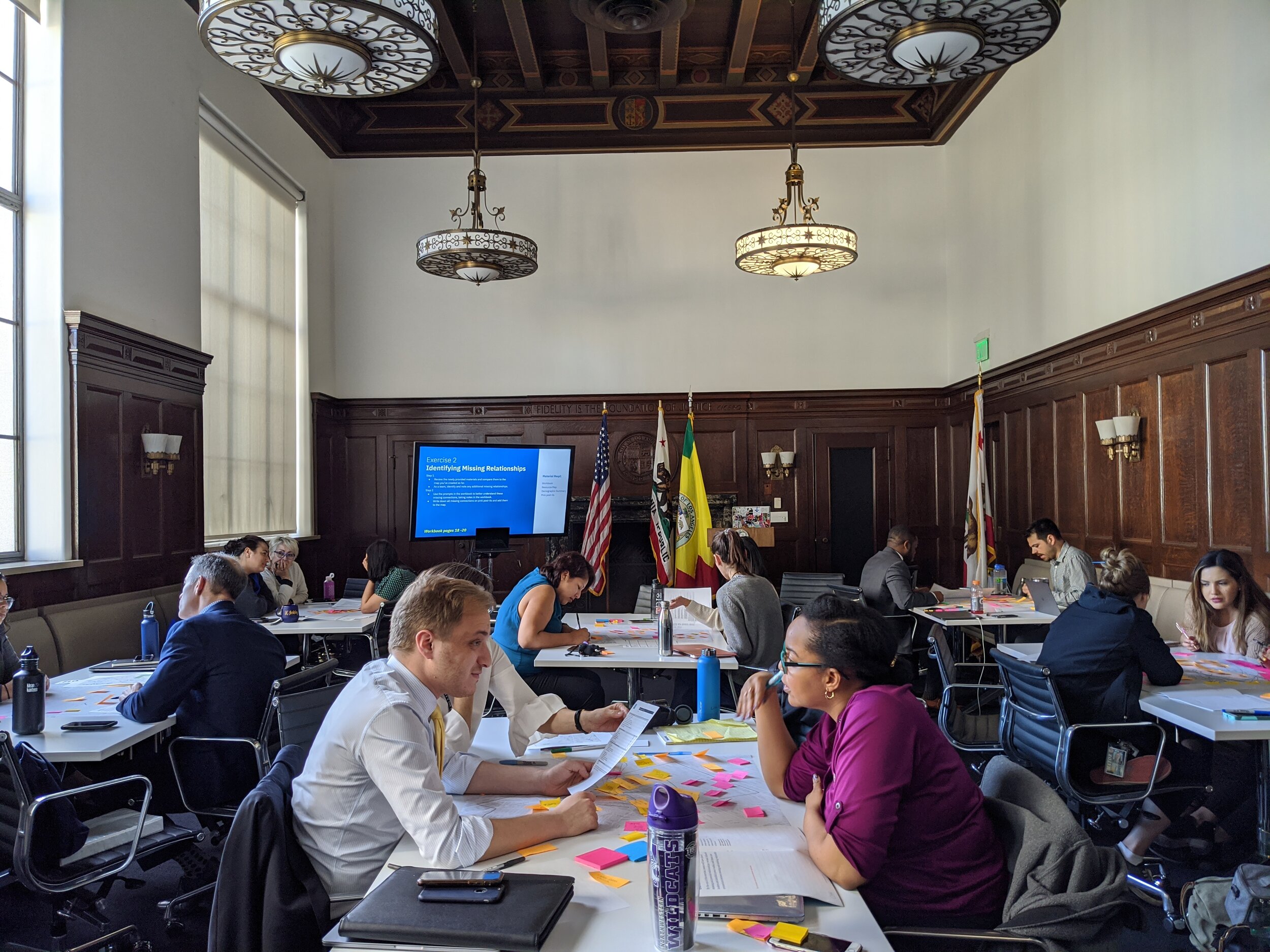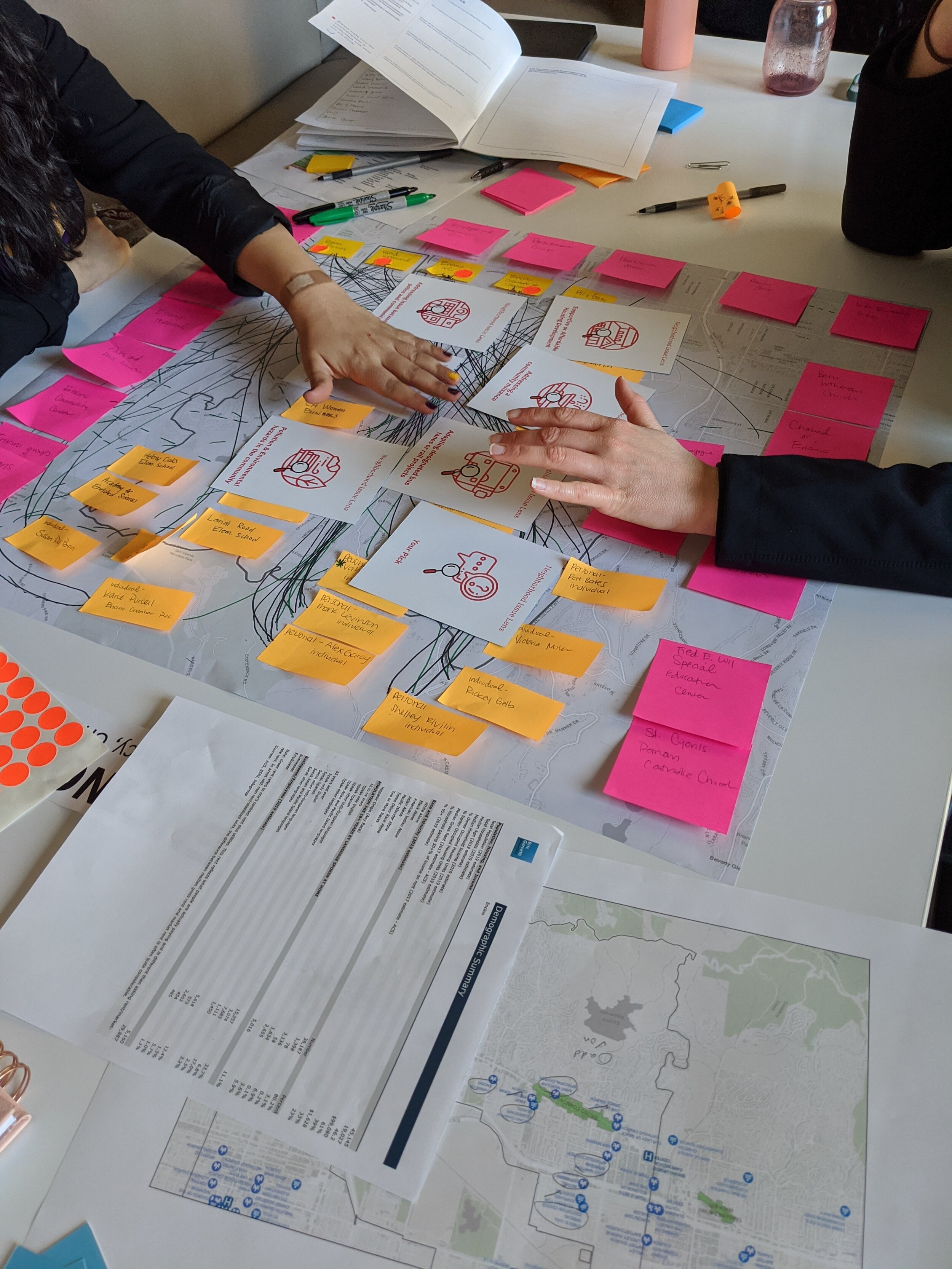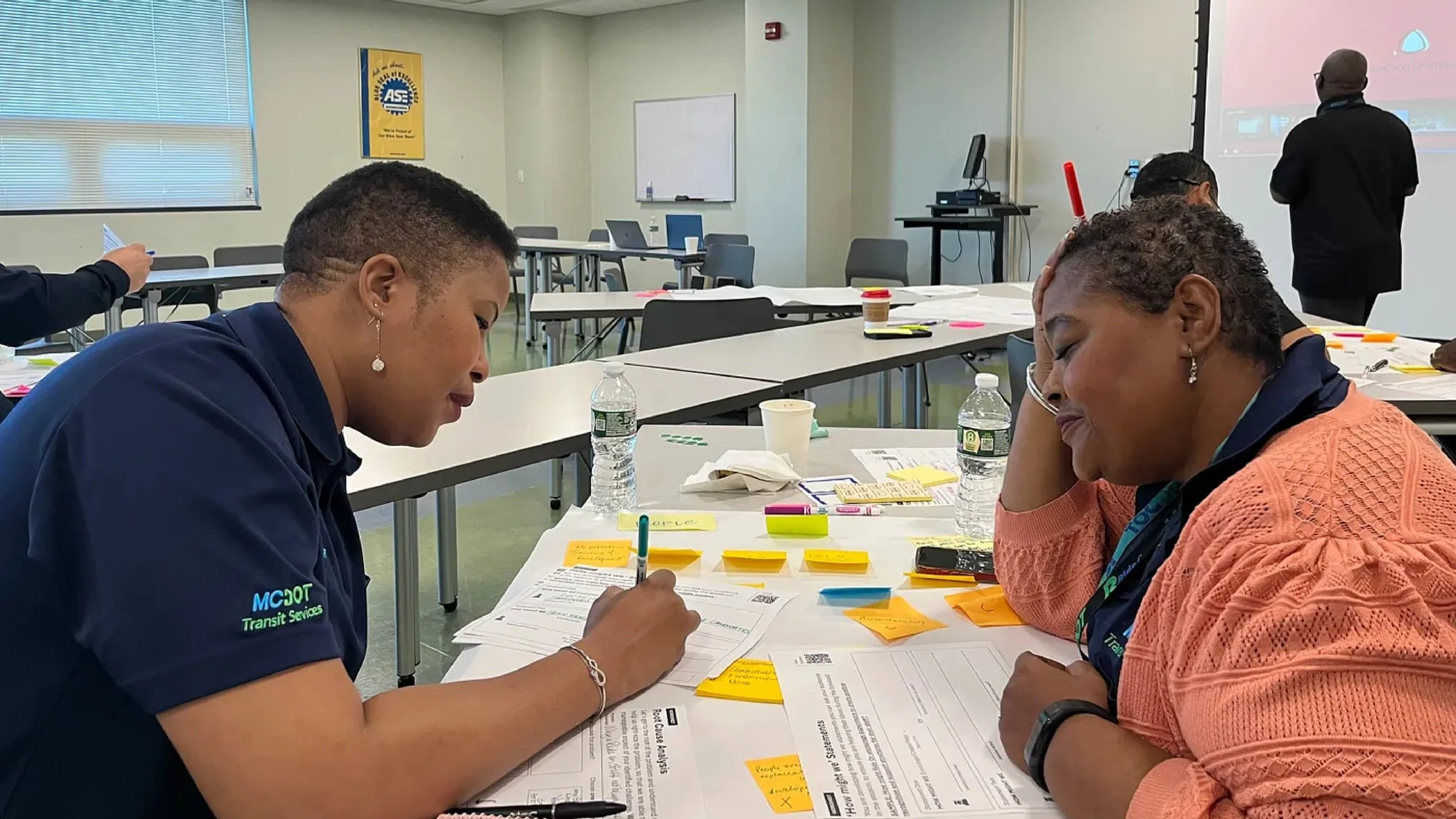Designing for Policy
Cities face challenges that range from traffic and trash collection to ensuring public safety and reducing food insecurity. That is why they often desire to find practices that leverage a diversity of perspectives. Participatory ideation sessions and co-design workshops are critical tools for solving the most pressing problems more quickly and effectively.
Innovation can be problematic, as it tends to align with leadership priorities in local government and may project an overly optimistic outlook to consistent problems (Lewis et al., 2020; Rathore, 2022). Unwarranted optimism about leader-driven solutions can create false expectations and divert resources from addressing the full scope of the problem. Traditional design thinking can perpetuate policymakers’ and managers’ approaches to problem-solving (Iskander, 2018). Dorst (2011) advocates that design thinking uses reasoning to move beyond analysis and problem-solving, which is often how policies are designed. They propose that it is imperative to constructively identify a given problem's central paradox to work toward a solution (Dorst, 2011). Recognizing that design in local government has its merits and demerits, over the past six years, I have identified a range of tools and methods to design a participatory process that focuses on the democratic concept, where those affected by decisions are involved in the design and decision-making process (Sanoff, 1990). Co-design and participatory approaches promise a more robust democratic foundation and a commitment to system redesign, explicitly expanding the inclusion of individuals traditionally excluded from the process. Lewis et al. (2020) emphasize this approach leads to participatory policymaking.
“Our Ideation Sessions have allowed us to reimagine how we bring people together to confront our city’s most pressing challenges. This approach offers another lens through which we view our work, and in doing so helps us innovate and create as we work to build the city of the future.”
Mayor Eric Garcetti
To address low morale and high turnover, the transit services division established four staff problem-solving committees from various work classes that met monthly. these committees aim to decentralize decision-making and Empower staff by giving them a voice in leadership choices. Depot initially facilitated each committee, and central Communication Chiefs focused on specific challenges identified by staff consensus, such as policy changes, teamwork communication or employee recognition. after the first two meetings, we realized that we needed help from The Innovation team to facilitate, guide, and provide direction to the Committees. Nidhi Singh Rathore was excellent through this 8-month process and provided us with the guidance and tools we needed to achieve the goals and objectives of the committees.
SAM OJI
Deputy General Manager, Transit Services
Montgomery County Dept of Transportation
Despite the presence of numerous advisory boards, a disconnect persists between them and the communities they represent. To address this, the Innovation team played a pivotal role in creating an assessment tool. This tool is designed to evaluate our committees and commissions, with the aim of moving beyond traditional approaches that may exclude marginalized communities. It will help us identify opportunities to create a more inclusive and representative participation, improve communication and engagement, and ultimately recruit diverse voices into our systems of civic participation.
Ken Hartman Espada
Assistant Chief Administrative Officer
Montgomery County Government, Maryland






